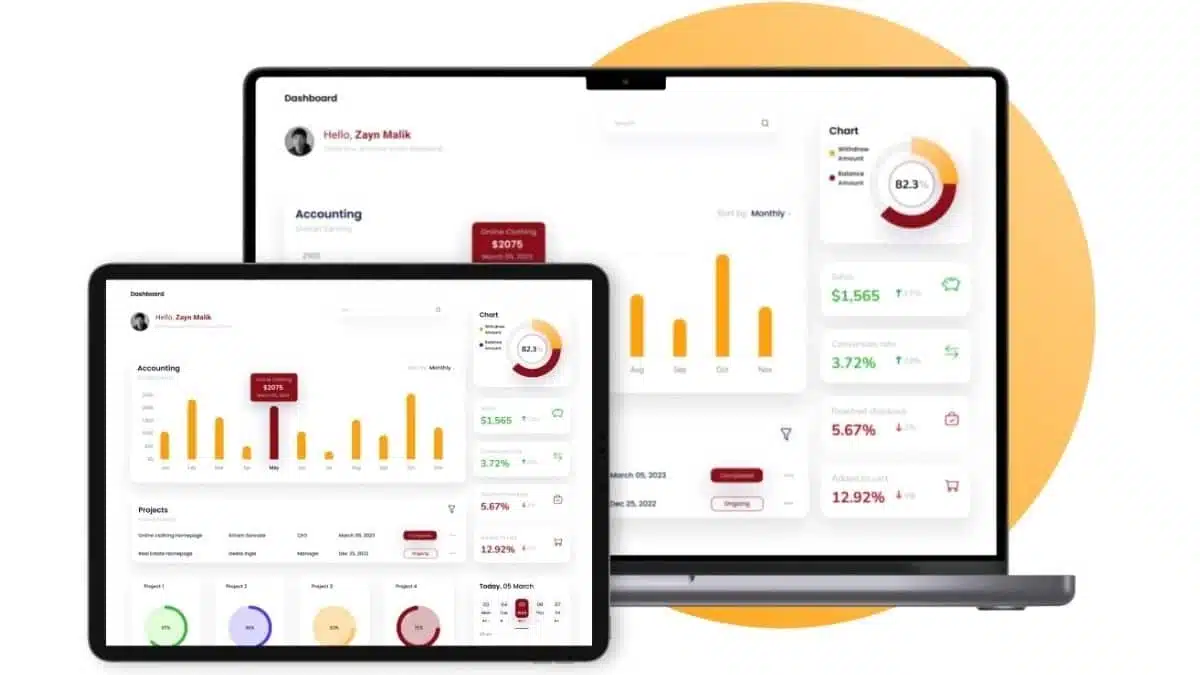Pakiramdam mo ba ay walang katapusang hamon ang paulit-ulit na pag-alis ng mga empleyado? For many managers, retaining talent requires not just effort but a strategic approach to addressing the root causes of dissatisfaction.
Challenges such as limited career advancement, lack of recognition, and ineffective communication often push employees to seek new opportunities. These setbacks result in higher recruitment costs and disrupt the workplace harmony needed for long-term success.
According to a study in the Philippines, nearly 30% of employees leave jobs due to unmet professional expectations. This underscores the importance of addressing employee needs through clear career pathways, continuous development programs, and effective communication to foster satisfaction and retention.
In this article, we’ll uncover 15 actionable strategies to reduce turnover and explore how software solutions can enhance employee retention. Stay tuned to discover how your business can turn challenges into opportunities.
Table of Content
Content Lists

Key Takeaways
|
What Is Employee Turnover?
Employee turnover is the percentage of employees who leave an organization within a specific period, usually a year. This turnover rate is calculated by dividing the number of employees who left by the average number of employees during that time and multiplying by 100, offering insights into workforce stability.
Turnover includes both voluntary departures, such as resignations or retirements, and involuntary ones, such as layoffs or terminations. A high turnover rate may indicate underlying issues in workplace culture or management, while low turnover reflects employee experience and effective retention strategies.
For example, the average turnover rate across US businesses in 2022 was 17.3%, with healthcare experiencing higher rates at 22.7%. To minimize this employee turnover, businesses must address challenges like dissatisfaction and provide opportunities for growth, ensuring a stable and motivated workforce.
How Does Turnover Affect Business?

Employee turnover directly impacts a business’s ability to maintain stability and achieve its goals. Companies with low turnover rates often enjoy a better reputation, making it easier to attract top talent and foster employee loyalty.
The financial cost of high labor turnover is substantial, with replacing an employee potentially costing up to twice their annual salary. Beyond monetary expenses, high turnover reduces operational efficiency as remaining employees are often burdened with additional workloads.
Low employee turnover, on the other hand, helps retain institutional knowledge and maintain the quality of products and services. When businesses prioritize efforts to reduce turnover, such as improving workplace culture and offering career development opportunities, they safeguard their reputation and enhance overall performance.
Ultimately, learning how to reduce employee turnover is critical to building a resilient, thriving workforce.
How to Reduce Employee Turnover

Reducing employee turnover is a critical priority for businesses seeking long-term success and stability. By addressing key factors such as job satisfaction, workplace culture, and career development opportunities, companies can foster loyalty and engagement.
Maintaining a low turnover rate helps build a strong employer reputation and ensures workforce stability. The following strategies provide actionable insights to help you reduce employee turnover, retain top talent, and create a thriving workforce.
1. Hire the right people
The foundation of reducing labor turnover begins with hiring candidates who align with your company’s culture and values. By clearly communicating job expectations and involving peers in the recruitment process, you can ensure a better fit. This approach minimizes mismatched hires and supports a low employee turnover rate.
2. Keep up with the market rate and offer competitive salaries and total compensation
Offering competitive compensation shows employees that their skills and contributions are valued. Regular salary reviews and benchmarking against industry standards can prevent dissatisfaction and reduce turnover. Additionally, attractive benefits packages enhance your ability to maintain low turnover.
3. Closely monitor toxic employees
Toxic employees can disrupt team dynamics and increase turnover rates by driving away high performers. Identifying and addressing negative behaviors promptly through feedback and intervention is essential. This proactive approach protects workplace harmony and reduces employee turnover.
4. Reward and recognize employees
A simple “thank you” or a formal recognition program can go a long way in showing appreciation. Employees who feel valued are more likely to stay and contribute their best efforts, reducing labor turnover. Peer-to-peer recognition programs further amplify positive reinforcement and engagement.
5. Offer flexibility
Flexibility in work schedules, such as remote work or flextime, is increasingly important for maintaining a low turnover rate. Providing tailored options boosts satisfaction and loyalty while maintaining productivity. This adjustment signals your commitment to respecting employee needs and well-being.

6. Prioritize work-life balance
Encouraging employees to disconnect after hours and take time off helps prevent burnout. Flexible scheduling and clear boundaries reinforce your company’s commitment to fostering a low employee turnover rate. A balanced work-life dynamic leads to higher engagement and retention.
7. Pay attention to employee engagement
Engaged employees are more productive and less likely to leave, which helps reduce turnover rates. Regularly conducting surveys and acting on feedback ensures that you’re addressing their needs effectively. Building meaningful relationships between managers and team members strengthens engagement and reduces labor turnover.
8. Define and develop a corporate culture
A solid corporate culture unites employees under shared values and goals. Clearly communicating and living these values creates an environment where employees feel they belong, reducing employee turnover. A strong culture ensures alignment, loyalty, and long-term satisfaction.
9. Standardize performance reviews
Consistent and constructive performance reviews motivate employees to grow while aligning their goals with company objectives. Moving beyond traditional annual reviews to dynamic feedback sessions fosters trust and reduces turnover. Employees who receive regular feedback are more likely to remain engaged and committed.
10. Allow opportunities for development and continuing education
Investing in employee development signals that you value their future within the company. Providing training and upskilling opportunities not only keeps your team competitive but also reduces labor turnover. Employees who see growth opportunities are more likely to stay long-term.
11. Develop career paths and opportunities to grow
Employees are more likely to stay when they see a clear future in your organization. Structured career paths and internal mobility programs demonstrate your commitment to their growth, helping you maintain a low turnover rate. These initiatives foster ambition and loyalty.
12. Don’t forget soft skills
Soft skills like communication, adaptability, and emotional intelligence are critical in fostering collaboration and problem-solving. Prioritizing these traits during hiring and development enhances workplace interactions and reduces employee turnover. A team rich in soft skills creates a positive and productive environment.
13. Be transparent
Transparency builds trust and strengthens connections between employees and leadership. Sharing updates on company goals and challenges fosters engagement and reduces turnover rates. Employees who feel informed and valued are more likely to remain loyal.
14. Focus on onboarding
An effective onboarding process ensures new hires feel welcome and prepared for their roles. Pairing employees with mentors and providing clear resources fosters engagement and reduces labor turnover from the start. Positive onboarding experiences encourage long-term retention.
15. Analyze existing turnover to find issues
Examining turnover data helps identify trends and root causes that may affect retention. By addressing these issues, you can implement targeted strategies to maintain a low employee turnover rate. Data-driven decisions ensure a more stable and satisfied workforce.
Also read: What is Business Turnover and Why is it Important
Minimize Employee Turnover Effectively with Hash Core ERP

HashMicro is a leading provider of ERP solutions designed to reduce employee turnover by optimizing workforce management. With its innovative technology and trusted reputation, HashMicro’s workforce management software empowers businesses to streamline HR processes, enhance employee satisfaction, and foster long-term retention.
If you want to learn more about how HashMicro’s ERP can help reduce employee turnover, you can try the free demo provided by this vendor. Discover how this solution can improve employee engagement, simplify HR workflows, and support sustainable workforce growth.
Why we recommend it: HashMicro’s ERP Software offers advanced tools to streamline workforce management, such as automated attendance tracking, performance monitoring, and employee engagement analytics. These features empower businesses to address retention challenges effectively, fostering a more satisfied and committed workforce.
HashMicro’s ERP software offers exceptional features tailored to address workforce challenges, making it ideal for businesses seeking to reduce turnover. Here are some key features offered:
- Built-in Business Intelligence: Empower your business with tools like Pivot, KPI Scorecard, and Custom BI, all displayed on an intuitive dashboard. These features provide real-time insights, enabling smarter, data-driven decisions with ease.
- WhatsApp Integration: Streamline communication effortlessly with seamless WhatsApp integration. Connect with clients and teams faster, ensuring smooth interactions that enhance productivity.
- Sheet Management: Simplify document handling with automated spreadsheet management that integrates data across modules. Enjoy accurate, efficient, and secure data processing to support your operations.
- Access Control: Protect sensitive information with customizable access levels for employees. Managers benefit from clear oversight of staff activities, promoting accountability and security.
- AI-Generated Reports: Leverage AI to receive comprehensive, easy-to-understand reports and actionable recommendations. Detect cost anomalies early and make informed decisions with confidence.
- Restricted User Access: Ensure data security by limiting ERP access to authorized locations. This feature reduces the risk of unauthorized entry and strengthens overall protection.
- Mobile Apps: Stay connected anytime, anywhere with the HashMicro mobile app. Manage tasks on the go and maintain productivity, whether in the office or working remotely.
- Flexible Hosting Options: Choose between Cloud or On-premise hosting to suit your business needs. Whether you prioritize scalability or enhanced control, HashMicro adapts to your unique requirements.
In addition, HashMicro’s ERP software integrates seamlessly with various modules such as HR software to ensure smooth and efficient operations. Its customizable and user-friendly interface adapts to your business needs, empowering you to build a more stable and motivated workforce.
Conclusion
Employee turnover is a common challenge for businesses across industries, often leading to increased costs, disrupted operations, and lower employee morale. By leveraging an advanced ERP system, companies can streamline HR processes, enhance employee satisfaction, and create a more engaging workplace environment, ultimately reducing turnover rates.
HashMicro ERP System offers tailored solutions to help businesses address employee retention challenges effectively. With features like automated attendance tracking, performance monitoring, and seamless communication tools, the system empowers companies to build stronger, more satisfied teams while optimizing operational efficiency.
Discover how HashMicro can transform your workforce management—schedule your free demo today and experience the benefits firsthand!

FAQ About How to Reduce Employee Turnover
-
What does reduce employee turnover mean?
Reducing employee turnover involves implementing strategies to lower the rate at which employees leave an organization. These efforts focus on improving job satisfaction, enhancing workplace conditions, and offering competitive compensation to create a more stable and committed workforce.
-
Why is employee turnover important?
Employee turnover is a critical indicator of organizational health. High turnover rates often point to issues like ineffective management, low engagement or satisfaction, inadequate pay and benefits, or a toxic workplace culture. Addressing these challenges is essential to maintain productivity, morale, and company reputation.
-
What are the causes of employee turnover?
Employee turnover is often driven by several factors, including:
1. Inadequate pay and benefits that fail to meet industry standards.
2. Limited opportunities for professional development or career growth.
3. Burnout caused by excessive workloads or poor work-life balance.
4. Weak onboarding processes that fail to integrate new hires effectively.
5. Poor management that lacks clear communication and leadership.
6. Lack of respect or appreciation, leading employees to feel undervalued.




































